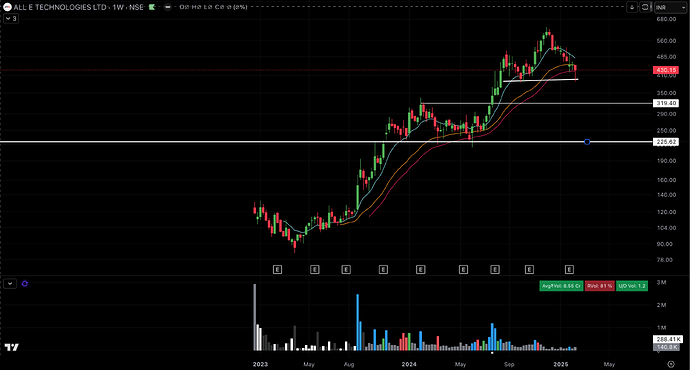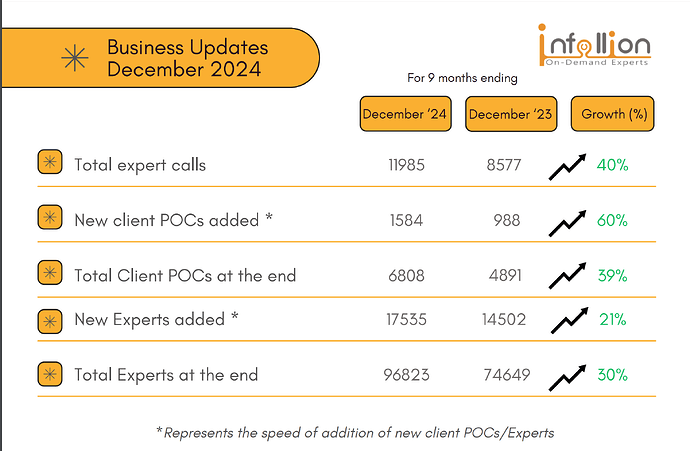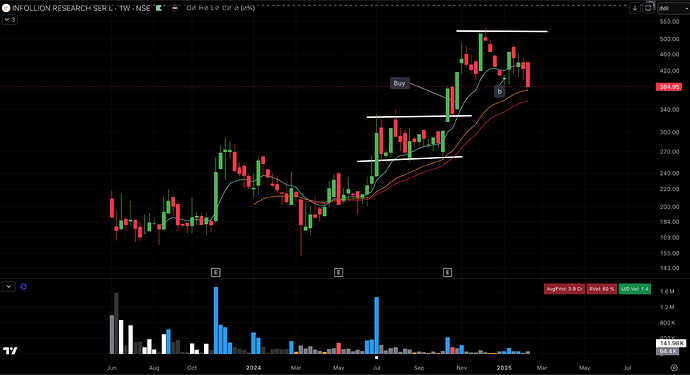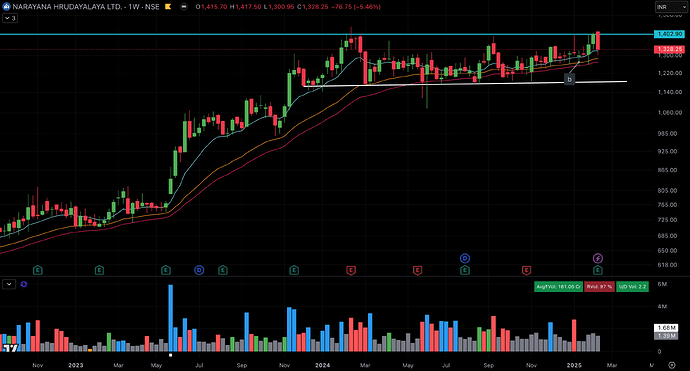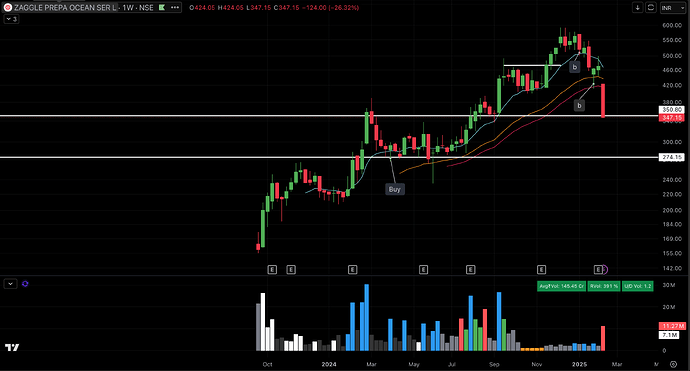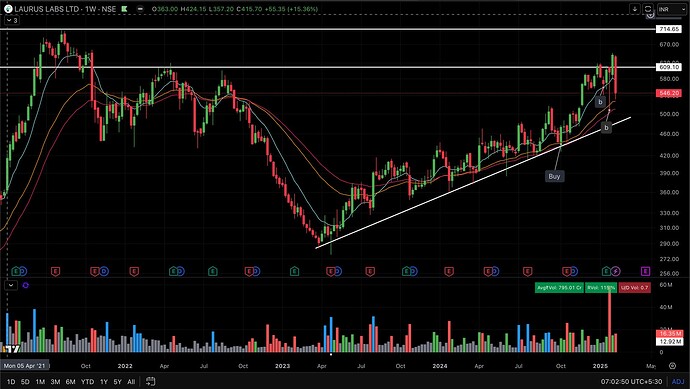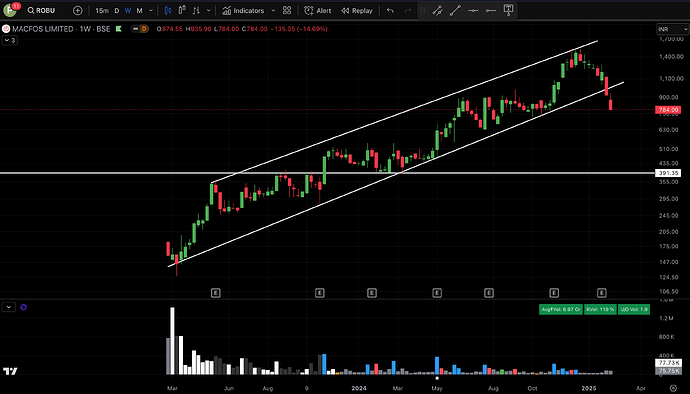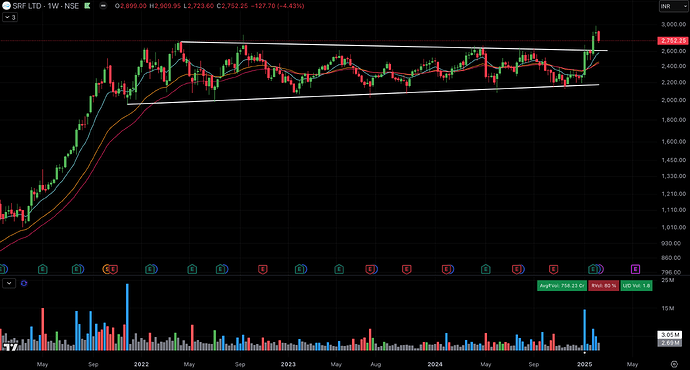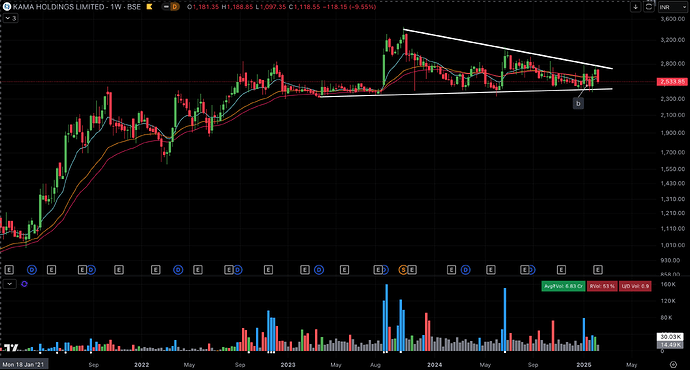Hello, my name is Prateek, and I am in my late 20s. I began my investing journey in mid-2021, despite coming from a family with absolutely no background in investing. Initially, I was drawn to the idea of making quick money through stocks after coming across popular (and often misleading) YouTube channels and influencers. At the time, I spent most of my energy deciphering what these influencers were buying, only to realize later that this approach was neither sustainable nor prudent for long-term wealth creation.
Subsequently, I began educating myself by reading a couple of books on investing and engaging with communities like this forum. While I’ve mostly been a silent reader here, I am starting this thread to stay accountable to myself and document my thought process transparently.
Key Insights and Learnings
Over the last 2–3 weeks, my approach and conviction have been tested due to the fierce correction in several stocks I hold. While I believed I had robust risk management strategies in place (e.g., price alerts and stop-losses), I was not prepared for back-to-back lower circuits in certain stocks. This prompted me to rethink my entire approach.
Until now, my primary sources for stock ideas were Twitter and this forum. However, I have now decided to go back to first principles by:
- Screening stocks based on earning triggers and fundamentals,
- Conducting deep research, and
- Waiting for attractive buying levels with a higher margin of safety.
Current Portfolio Allocation
My wealth is currently 100% in equity (direct stocks, mutual funds, US stocks, and a Bitcoin ETF), except for emergency funds. However, I’ve recently recognized the importance of diversification and decided to include gold in my portfolio. Below is the rough split of my portfolio:
| Class | Allocation |
|---|---|
| India Stocks | 75% |
| India Mutual Funds | 10% |
| US stocks | 12% |
| Bitcoin ETF | 3% |
Key Notes:
- Gold: I was initially skeptical about gold but now plan to periodically add gold during significant corrections for better asset allocation.
- Bitcoin: I aim to increase my Bitcoin allocation to 5–6% in the coming months. While I speculated on cryptocurrencies in 2021 (and burnt my hands), this time I’m sticking exclusively to Bitcoin due to its legitimacy and growing acceptance, especially after events like Donald Trump’s re-election.
Mutual Fund Investments
- PPFAS Flexi Cap Fund: A long-standing part of my portfolio (>2 years) to which I haven’t added or sold any units during this time.
- Old Bridge Focused Equity Fund: Invested during its NFO, holding since then.
- Helios Financial Opportunities Fund: A recent addition to gain exposure to lending and financials, as I prefer professionals to manage leveraged businesses.
Indian Stock Portfolio
I have avoided adding new money to my Indian stock portfolio for the last few months due to concerns over high valuations and volatility. Before the budget announcement, I took a cash call of 10%, expecting increased market volatility, but redeployed this cash post the Delhi election results.
However, last week’s extreme volatility was an eye-opener. I sold some low-conviction and speculative holdings, redeploying the funds into NiftyBees for stability. My rationale is that staying out of the market entirely poses its own risks, so I prefer to keep my cash invested in NiftyBees for now.
Goals Through This Thread
- Hold myself accountable by sharing my thought process transparently.
- Build a sustainable, research-backed investment approach based on first principles, rather than relying on noise from social media or influencers.
| Stock Name | Weight | Avg Purchase Price | Current Price | Profit/Loss % |
|---|---|---|---|---|
| All E Technologies | 12.55% | 321.51 | 430.15 | 33.79% |
| Infollion Research | 11.23% | 389.24 | 384.95 | -1.10% |
| Narayana Hrudayalay | 9.69% | 1138.80 | 1328.25 | 16.64% |
| Zaggle Prepaid Ocean | 5.57% | 388.22 | 347.15 | -10.58% |
| Laurus Labs | 5.50% | 504.32 | 546.20 | 8.30% |
| Macfos | 5.15% | 838.57 | 784.00 | -6.51% |
| Kama Holdings | 4.62% | 1906.69 | 2533.85 | 32.89% |
| International Gemmol | 3.30% | 508.79 | 452.30 | -11.10% |
| EFC (I) | 3.29% | 254.14 | 245.15 | -3.54% |
| Pennar Industries | 2.73% | 159.54 | 143.90 | -9.80% |
| Godawari Power & Isp | 2.47% | 178.46 | 169.52 | -5.01% |
| GMM Pfaudler | 2.46% | 1201.18 | 1126.10 | -6.25% |
| Multi Commodity Exch | 2.38% | 3371.26 | 5443.70 | 61.47% |
| Apollo Micro Systems | 2.32% | 124.46 | 113.78 | -8.58% |
| Neuland Laboratories | 2.59% | 13,555.18 | 11,825.25 | -12.76% |
| Praveg | 2.23% | 674.39 | 610.90 | -9.41% |
| Aditya Birla Capital | 2.23% | 171.89 | 152.74 | -11.14% |
| Nuvama Wealth | 1.85% | 5718.33 | 5287.75 | -7.53% |
| Kotak Bank | 2.85% | 1936.70 | 1952.40 | 0.81% |
| NIFYBEES/Cash | 14.99% | 257.51 | 256.95 | -0.22% |
Some of these names are recent additions after securing gains from earlier holdings. In this financial year, I have realized profits equivalent to approximately 20% of my current portfolio value. Any position below 2-3% of the portfolio is considered a starter position, with the goal of increasing exposure as I build higher conviction through in-depth research and quarterly earnings analysis. I also incorporate technical analysis to determine optimal entry points for initial purchases and strategic averaging up. Below is my investment thesis for the top positions in my portfolio:
All E Technologies
- IT solutions; well-positioned to capitalize on digital transformation across key markets (US, India, Africa).
- Trustworthy, Competent, Efficient management.
- Management set an internal target of 25% growth over 10 year period. Has been growing consistently in last few quarters with good cash flow conversion.
- Functions as an ancillary business to Microsoft’s ecosystem, benefiting from its growth momentum.
- Initiated position in May 2024 when stock was available at 25x TTM PE. Have scaled up position since then.
- Currently at 34x TTM PE, which looks reasonable for Hold.
Infollion Research
- Positioned as a one-of-a-kind listed business in India with inherent network effects that can create a competitive moat.
- Management Quality: Competent and trustworthy leadership; FY25 is projected as a growth year, supported by recent positive quarterly updates.
- Clear management guidance and upward business trajectory suggest substantial upside potential in the coming year.
- Risks: My convinction in the business has been slightly shaken in past month as I experience the quality and efficiency of the open source Deepseek R1 model. OpenAI came up with the Deep Research Product. Google also has one and now Perplexity is offering it for free. With all these technological developments, I am not entirely sure about sustainability of business here.
Narayana
- Leading healthcare provider delivering cost-efficient, high-volume services in India and Cayman.
- Trustworthy, Competent, Efficient Mangement
- Benefits from rising healthcare demand, favorable demographics, and increased health awareness.
- Recent investor presentation outlines ~30% growth from existing bed capacity.
- Highest efficiency ratios in listed space with lowest valuation.
- Insurance business is an optionality.
Zaggle
- Management guiding for very aggressive growth of >50% CAGR, albeit at the cost of operating margins. Although they guided operating margins to gradually go back to 15-16% range over a 3-4 year period.
- Scalable: With over 3,100 corporate customers and 29 lakh users, Zaggle is well-positioned to scale further by shifting focus to larger clients and increasing interchange fee revenues.
- Strategic international expansion, especially into the US market, presents significant long-term upside despite competitive challenges.
- Risks: No moat, no network effects. Need to study more to scale up position.
Laurus
- Non ARV pie is growing. Management guided for 20% EBIDTA margin for FY25 i.e., NCE CDMO project deliveries start from Q4.
- New growth drivers: CDMO, biologics, advanced therapies (cell and gene therapy)
- Significant capex done in last 4 years.
- Expecting very good numbers in Q4 before scaling up the position.
Macfos
- Platform business for electronic components with over 12,000 SKUs, creating a moat through deep technical expertise and a one-stop solution for customers.
- Competent management, have been scaling the business very well. Trailing SageOne here so believe there are no CG issues.
- Founder-led, first-mover advantage in India’s niche e-commerce market.**
- New growth driver: Robu 2.0- creation and expansion of proprietary brands in addition to the current distribution business (Transition towards asset light model?)
- Initiated a position in July 2024 when stock was available at ~50x TTM PE. Scaled up position while it was falling, now below initial purchase price.
Kama Holdings
Kama Holdings is the holding company of SRF Ltd. SRF has been in the sideways trend for about 3.5 years. I started my position in Kama Holdings approximately two years ago after reading an insightful letter from Solidarity PMS , which laid out the investment case for SRF and its holding structure. However, in hindsight, the opportunity cost has been significant as SRF faced multiple headwinds during this period. While Kama Holdings has consistently distributed dividends received from SRF and engaged in shareholder-friendly actions (e.g., issuing a bonus to enhance liquidity and buying back shares), the stock continues to trade at its highest-ever holding discount to SRF’s value.
While SRF has shown technical strength by moving above its base, Kama Holdings remains below its 200-day moving average , indicating continued weakness or lack of market confidence. I will scale up my position once I started to see some green shoots in SRF’s earnings over next few quarters.
Disclaimer: I am not SEBI-registered. No recommendation to buy, sell or hold these names. I am heavily biased. I may sell my shares at any point based on my stoploss.

